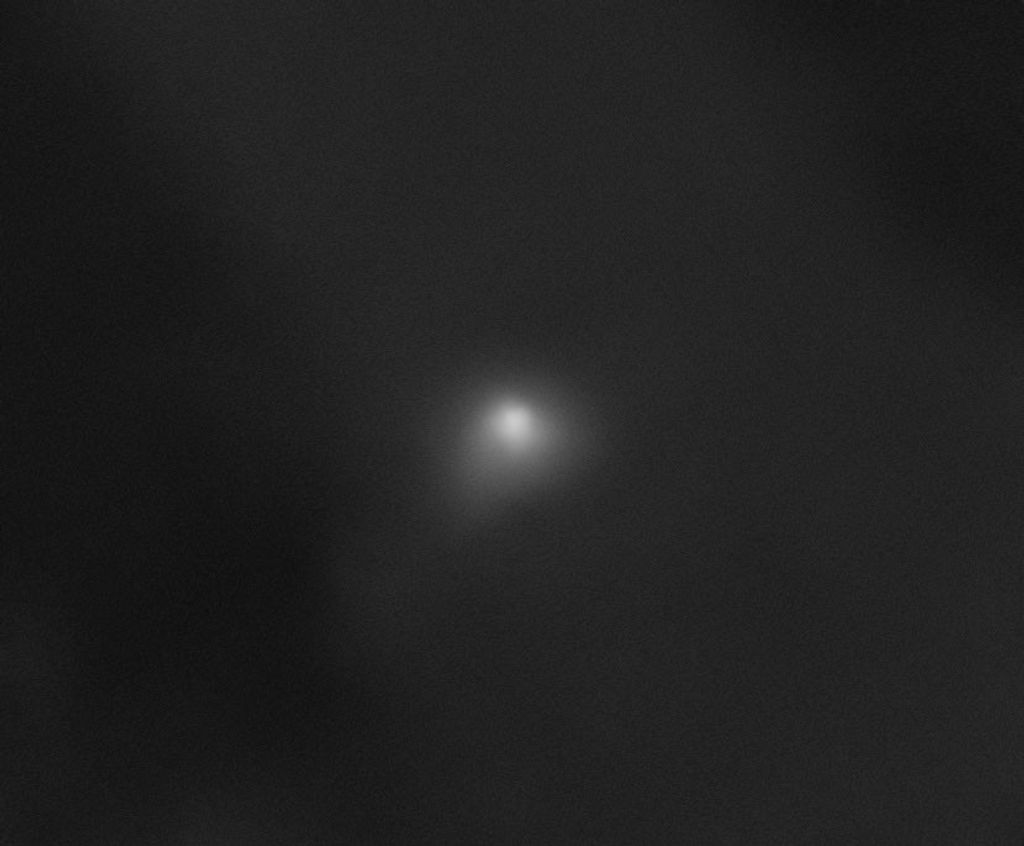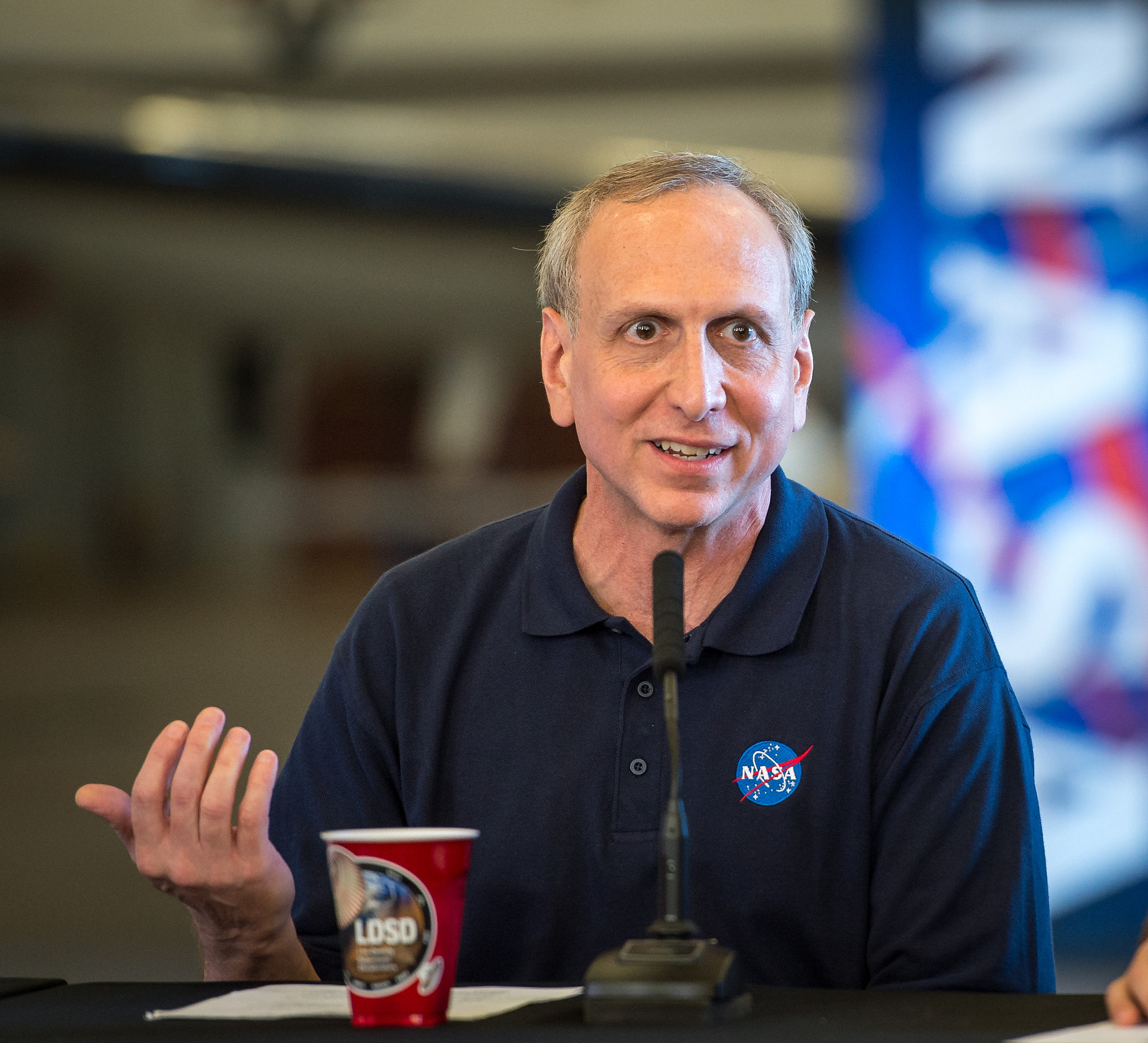Guiding TDM to Success is ‘All a Matter of Balance’
Note: Technology Demonstration Missions “Bridge Builders” are team members at NASA centers and partner organizations who help take cutting-edge technologies from concept to flight readiness — bridging the gap to enable rewarding new space missions.
For much of his quarter-century career in the nation’s space program, Steve Jurczyk, associate administrator for NASA’s Space Technology Mission Directorate, has championed the use of cutting-edge technology to advance exploration and extend human knowledge. Whether executing some of NASA’s most prestigious exploration missions or leading the agency’s first field center, he’s been a staunch advocate for the application of well-developed, mature technology to answer any challenge, overcome any obstacle.
In his leadership role for STMD, which funds NASA’s Technology Demonstration Missions, Jurczyk manages a broad mix of space technology programs, each intended for infusion into the mission needs of NASA and its government and commercial partners.
Previously, he was director of NASA’s Langley Research Center in Hampton, Virginia, from 2014-2015, and deputy director there from 2006-2014, overseeing some 3,600 NASA workers and supervising research and technology for global climate change, deep space exploration and air transportation. During his career, he contributed to the development of numerous space-based remote-sensing systems for Earth science research and worked on key flight projects including the Orion Launch Abort System. He has received the NASA Outstanding Leadership Medal and the Presidential Rank Award of Meritorious and Distinguished Executive.
A New York City native, Jurczyk primarily grew up in Farmingdale, New York. He attended the University of Virginia in Charlottesville, where he earned a bachelor’s degree in electrical engineering in 1984 and a master’s in the same major in 1986. He joined NASA in 1988 as an electronics engineer at Langley. He and his wife Ann have two grown daughters, and reside in Fredericksburg, Virginia, where Jurczyk is an elder in his church and enjoys running and cycling.
He recently shared some thoughts on TDM’s goals and its promising impact on NASA’s core mission: the safe, rewarding expansion of humanity’s reach across the solar system.
What’s the main focus of TDM as you envision it?
TDM is NASA’s critical program for taking technology the last few steps toward practical use in space. We’re completing the transition from concept to capability, delivering technologies that are ready to support NASA missions, or those of industry or other government agencies. These are technologies we’ve previously matured in laboratory settings, taking them to around Technology Readiness Level 5. Then, as TDM projects, we ground-demonstrate them in a relevant environment or launch them to space for full-scale flight demonstration. Some technologies may be transitioned directly to NASA missions; others that are more of an evolutionary leap must first be test-flown, reducing risk before we implement them on human-rated exploration missions or robotic science missions.
Bottom line, it’s our goal to identify the challenges inherent in preparing for future robotic science missions and human exploration of the solar system, and to develop technologies to achieve those goals, taking them from drawing-board concepts to practical application. We’re always fine-tuning our strategy for identifying high-risk, high-payoff technologies and maturing them as rapidly and cost-effectively as possible.
Speaking of challenges, what are the big ones for TDM?
The biggest, clearly, is cost-effectively transitioning projects from laboratory testing to actual flight projects — finding the right balance of hardware and system development and testing to prepare these technologies for use in space. As an example, TDM has taken on a new effort called the Deep Space Optical Communications project, or DSOC, which is maturing a number of technologies to improve in-space communications performance 10 to 100 times over the current state of the art, without increasing flight vehicle mass, volume or power requirements. Led by NASA’s Jet Propulsion Laboratory in Pasadena, California, DSOC previously was part of STMD’s Game Changing Development Program (GCD). TDM will continue maturation of key technologies for the space modem needed to transmit data and the ground-station hardware needed to receive the data here on Earth. Our relatively small, agile DSOC team has successfully conducted risk-reduction testing on the ground as part of the GCD project, using vacuum chambers to simulate the space environment.
DSOC is scheduled to launch in 2022 on NASA’s robotic Psyche mission, which will fly to the asteroid belt to study the giant metal asteroid of the same name. So now that relatively small team must transition to a larger one, handling integration into a larger, much higher-profile science flight mission. Within TDM, of course, we use NASA guidelines for spaceflight hardware testing and integration, project management and systems engineering best practices — but it’s not a billion-dollar science mission, and it’s certainly not a human-rated or crewed mission. So it’s always a challenge to apply those principles in a manner appropriate for a technology demonstration mission, where we can accept a higher level of risk. Finding the proper balance and risk posture is always a challenge. Again, it’s all a matter of balance.
What payoff are you most excited to see right now amid current TDM projects?
TDM has a great portfolio of projects — and we’re in the early stages of formulating some exciting new additions. At the moment, we’re preparing to launch two TDM projects. First is the Deep Space Atomic Clock (DSAC), a miniaturized, ultra-precise, mercury-ion atomic clock orders of magnitude more stable than current space-based navigation clocks. It’s set to fly later this year on Orbital Testbed 1 or OTB-1 mission. Developed for STMD by NASA’s Jet Propulsion Laboratory in Pasadena, California, DSAC will demonstrate precision navigation and timing capabilities crucial to our pursuit of deep-space exploration. Second is the Green Propellant Infusion Mission (GPIM), which will be launched later in 2017 on a modified Ball Aerospace BCP-100 small spacecraft. Led for NASA by Ball Aerospace & Technologies of Boulder, Colorado, in partnership with Aerojet Rocketdyne, the GPIM project has developed a propulsion system utilizing a much safer alternative to the conventional, highly toxic fuel hydrazine. It will save overall costs, improve propellant efficiency and reduce handling concerns.
Then in 2019 we’ll fly the Laser Communications Relay Demonstration (LCRD) mission that will revolutionize the way we send and receive data, video and other information in space. Led by NASA’s Goddard Space Flight Center in Greenbelt, Maryland, LCRD technology could enable us to deliver video and data from spacecraft orbiting Earth more rapidly, increasing the nation’s research and operational capabilities. Also in 2019, we will complete the flight hardware development for NASA’s Solar Electric Propulsion (SEP) project, led by NASA’s Glenn Research Center in Cleveland. SEP will test a high-power electrical propulsion system that will use 10 times less propellant than comparable chemically fueled spacecraft — yet could still prove robust enough to propel robotic and crewed missions to destinations across the solar system. In TDM, every payoff is exciting and has the potential to transform future exploration and science missions.
What’s been your most memorable NASA moment to date?
A definite high point was working on the entry, descent and landing (EDL) element of NASA’s Curiosity rover mission — easily the most interesting, most dynamic and highest-risk part of that flight mission. We don’t call EDL “seven minutes of terror” for nothing! But that was a really good night. NASA won the Collier Trophy for the mission in 2013.
I’ve also really enjoyed leading space technology development for STMD. I like looking beyond the current state of the art to figure out what the future requires, what technologies will be needed to do the things we want to do and how that will impact the larger spectrum of NASA missions, Department of Defense requirements and industry pursuits. We have a tremendous team in STMD and TDM — here at NASA Headquarters, in the program office at NASA’s Marshall Space Flight Center and in the project offices all across the nation.
What would most people be surprised to learn about you?
Two things. Through my church, I do mission work in Central America, primarily Guatemala. I’ve been there five times, and I enjoy the experience very much. Also, I’m an avid snowboarder. I take some ribbing about being the old guy on the slopes, but I really enjoy snowboarding with my daughters.




























